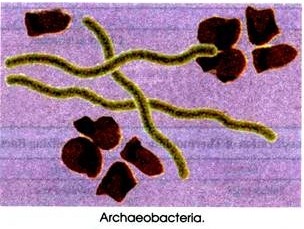ADVERTISEMENTS:
In this article we will discuss about the characteristics of archaeobacteria.
All organisms of this group are assumed to be descendent from a common ancestor, the so called progenote and the organisms are primitive, cellular with a rudimentary not well coordinated translation apparatus. The unique feature is in the cell membrane structure. The membrane lipids are glycerol isopronyl ethers due to the unusual chemical composition.
The cell envelopes show resistance against cell wall antibiotics and lytic agents. These bacteria exhibit unique cell envelope. All lack murein but exceptionally it occurs also in some eukaryotes such as Planctomyces. The absence of ribothymidine in the “common” arm of the tRNA is unusual. It is replaced by 1- methyl-pseudouridine or pseudouridone.
ADVERTISEMENTS:
All Gram-negative bacteria composed of single layered or more complex crystalline protein or glycoprotein subunits while all Gram-positive bacteria have pseudomurein, methanochondrin or heteropolysaccharide. Single S-layers (three dimensional structures) are found in most organisms which help in withstanding extreme environmental conditions such as high salt, low pH and high temperature.
The size of the genome of archaeobacteria varies from 0.8 × 109 Dalton (Hermoplasma) to 2.4 × 109 Dalton (Halobacterium) and is generally smaller than E.coli. The G+C contents of the DNA exhibits a broad range from 25-68 mol%.
The archaeobacteria are distinguished from the other two kingdoms by the sequence signature of the 16S rRNA.
The unique properties of living conditions (archaeobacteria) are of extreme pH, temperature, salinity, and pressure to establish a “new biotechnology” which helps in production of biogas, in ultrafiltration, production of thermophilic enzymes, restriction enzymes, leaching and as biosensors.

